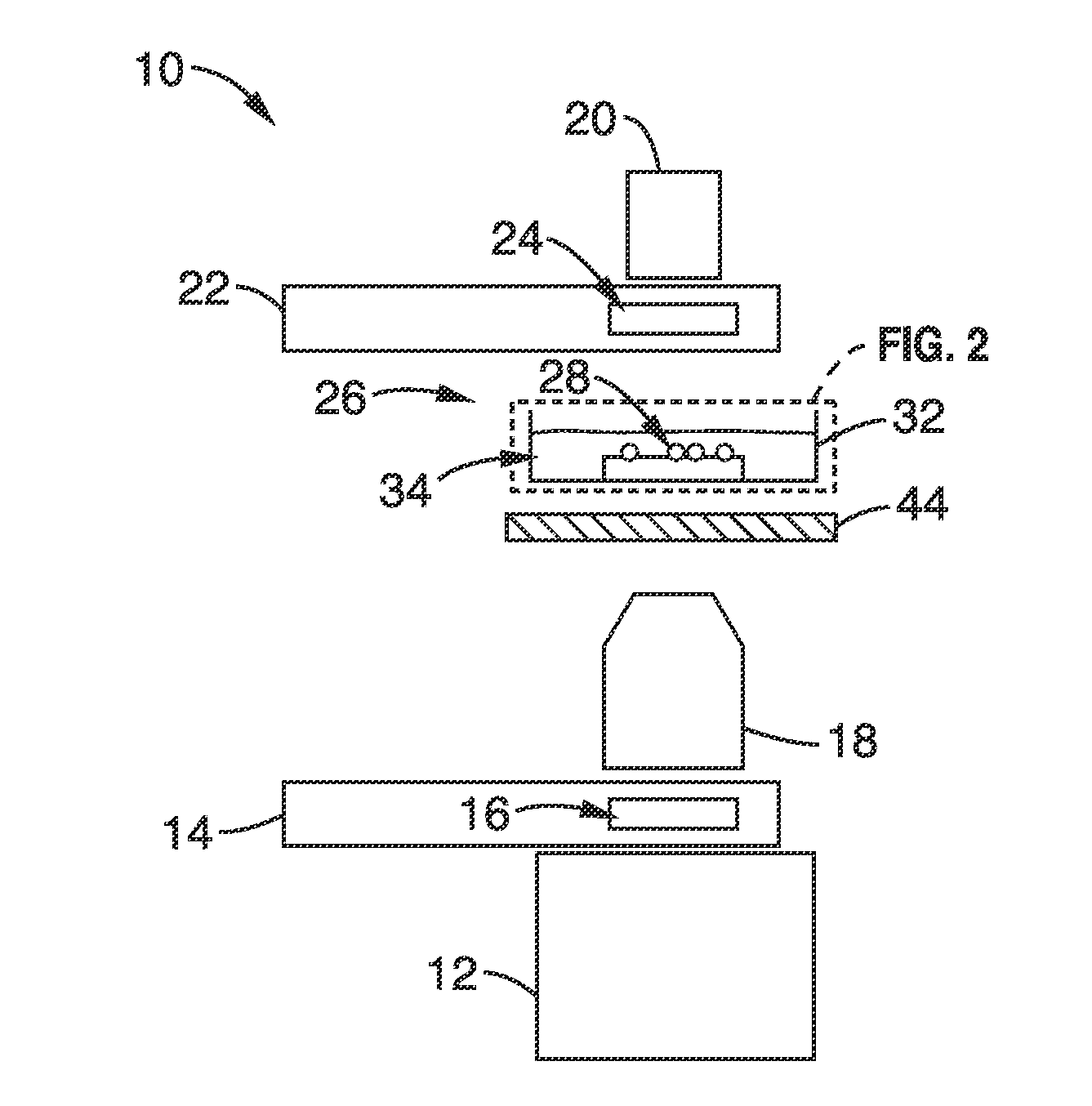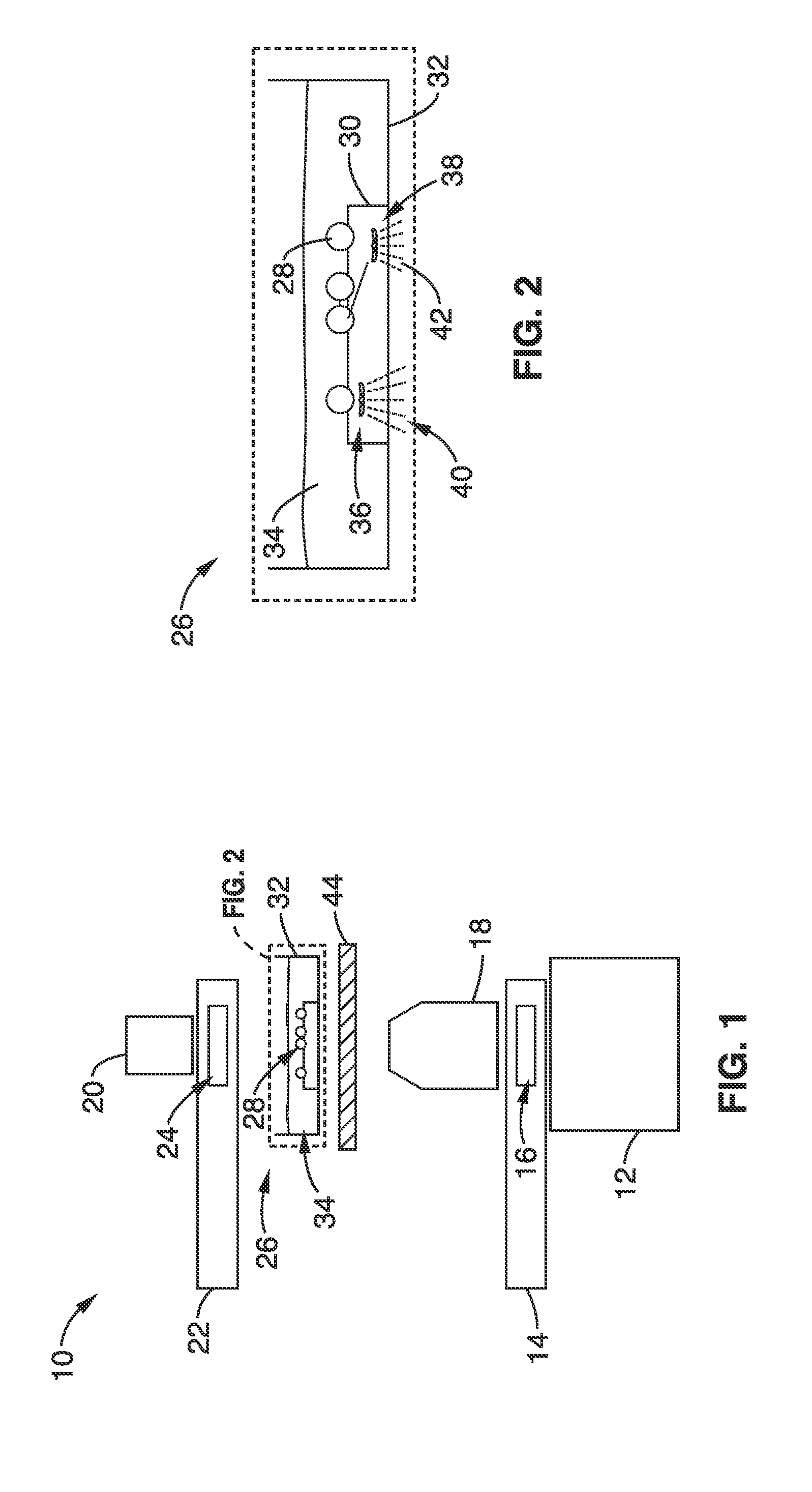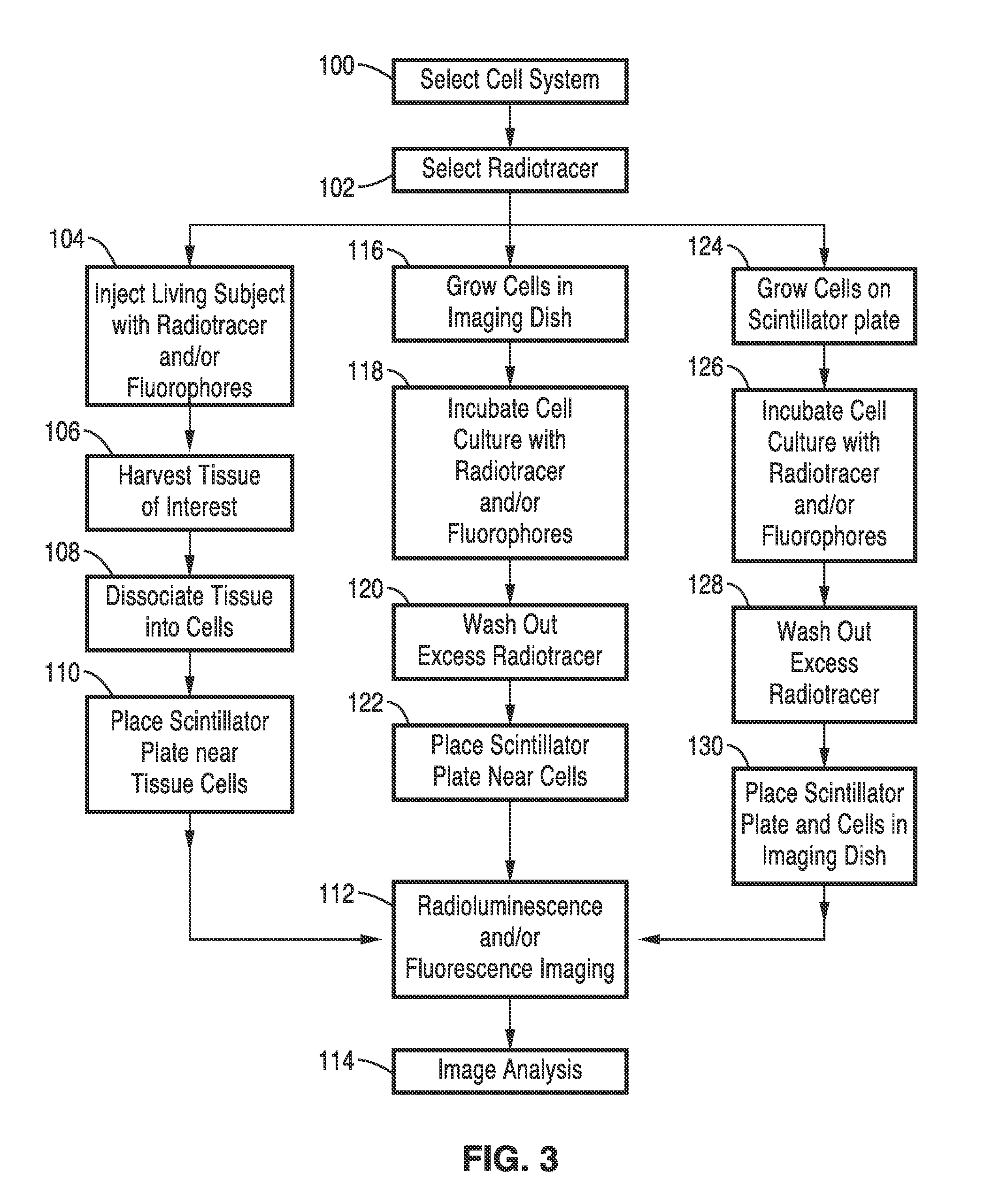Imaging the heterogeneous uptake of radiolabeled molecules in single living cells
a radiotracer and living cell technology, applied in the field of cell imaging, can solve the problems of limited application of fluorescence imaging beyond cell culture imaging and shallow tissue imaging, unsuitable for studying some of the more subtle biological processes, and little is known about the biological behavior of radiotracers at the individual cell level
- Summary
- Abstract
- Description
- Claims
- Application Information
AI Technical Summary
Benefits of technology
Problems solved by technology
Method used
Image
Examples
example 1
[0094]To visualize the uptake of radiotracer at the microscopic level, cells were cultured directly on a scintillating plate made of a material that converts incident beta radiation into optical photons via radioluminescence. In these experiments, scintillation plates were used with dimensions 10 mm×10 mm×0.5 mm that were made of CdWO4, a dense, high-Z, non-hygroscopic material, with both sides polished to allow for concurrent optical imaging (MTI Corp.). In one experiment, HeLa cells were seeded and cultured on the scintillating plate, immersed in cell culture medium (Dulbecco's Modified Eagle Medium containing 10% fetal calf serum) for 12-18 hours. After the cells had adhered to the surface of the scintillator plate and divided adequately, they were fasted for two hours in glucose-free cell medium and incubated for 20 minutes at 37° C. with 400 μCi of 18F-fluorodeoxyglucose (FDG). The plate, loaded with cells, was then washed thoroughly and placed in a 100 μm-thin glass-bottom mic...
example 2
[0096]To further evaluate the performance of the imaging set-up, a drop of FDG (activity≦2 μCi) was placed between the imaging dish and the scintillating plate. Upon evaporation of the water solvent, FDG precipitated into small solid deposits that could be seen on both brightfield and radioluminescence images. The size of these deposits was measured by fitting them with 2-D Gaussian functions.
[0097]Good correlation (ρ=−0.79) was observed between brightfield and radioluminescence images. A magnified view reveals weaker features present in both imaging modes. A particularly intense deposit was selected and measured by fitting with an isotropic 2-D Gaussian. The full width at half maximum (FWHM) was found to be 5.0 μm for the brightfield image and 6.9 μm for the radioluminescence image, yielding an estimated system resolution of 4.7 μm (FWHM).
example 3
[0098]In another experiment, the sensitivity of the system was evaluated by imaging the decay of 2.6 μCi of FDG over 24 hours. A small drop of FDG was mixed with glycerol and placed on an imaging dish. The mixture was then heated for several hours to allow the water solvent to evaporate, thereby ensuring that no water would evaporate during the acquisition. It was verified that the mixture was uniformly spread between the scintillator plate and the imaging dish. The mixture was imaged every 31 minutes, in 30 minute-long frames, with an EM gain of 251 / 1200. Within a large (370000 pixels) region of interest, pixel values were expressed as a percentage of their value in the first frame. The mean pixel value and the range of pixel-to-pixel fluctuations—defined by one standard deviation—were computed for each frame. For a quantitative assessment of radioluminescence intensity, flat-field and dark image corrections were applied to all acquired images.
[0099]Initially, 69.7 fCi of FDG per C...
PUM
| Property | Measurement | Unit |
|---|---|---|
| Thickness | aaaaa | aaaaa |
| Thickness | aaaaa | aaaaa |
| Thickness | aaaaa | aaaaa |
Abstract
Description
Claims
Application Information
 Login to View More
Login to View More - R&D
- Intellectual Property
- Life Sciences
- Materials
- Tech Scout
- Unparalleled Data Quality
- Higher Quality Content
- 60% Fewer Hallucinations
Browse by: Latest US Patents, China's latest patents, Technical Efficacy Thesaurus, Application Domain, Technology Topic, Popular Technical Reports.
© 2025 PatSnap. All rights reserved.Legal|Privacy policy|Modern Slavery Act Transparency Statement|Sitemap|About US| Contact US: help@patsnap.com



